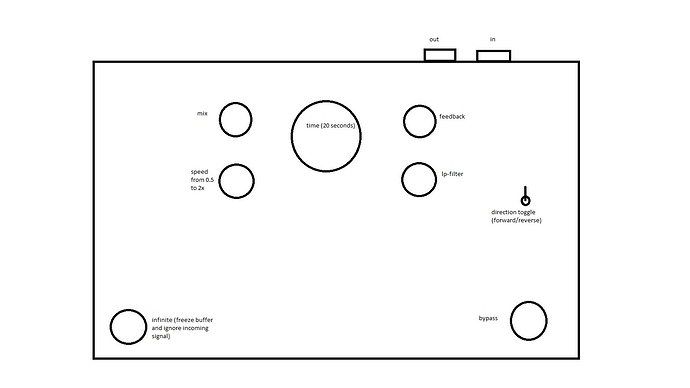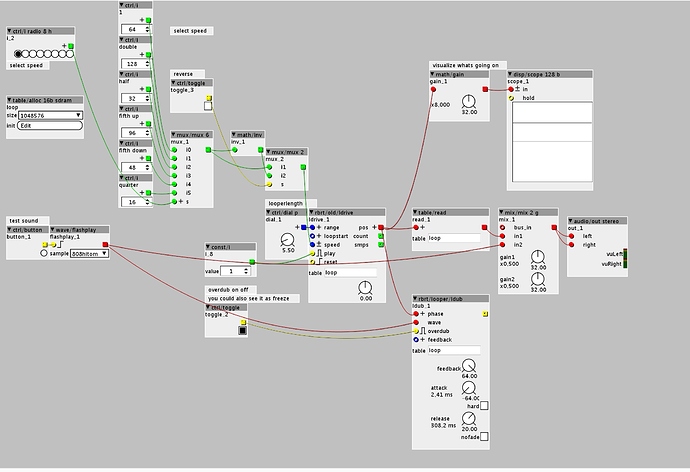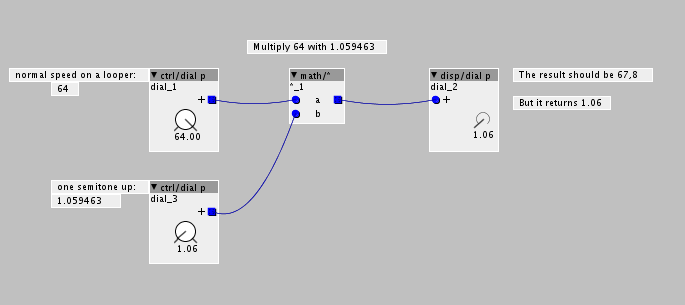So, my band mate wondered if I could help him with making a delay-looper using Axoloti. I've tried searching the forums. I've tried looking up threads on loopers, tables, pitch shifting etc, but every time I approach a table it just does not seem to work for me. There is something I'm just not getting, and every patch I think might be similar to what I want is either too complex for me to understand or is uploaded with a link that leads nowhere, so it's unavailable. When I try making it from scratch, I either end up with no sound from the table or I get stuck on either not getting it to loop or not having an option of using it as a delay and looper at the same time, or the pitch shifting sounds like a horror movie. The list goes on. After three days of scratching my head I ask if any of you would be so kind as to help me out with getting started. Here's a mockup of what he wants:
So, it's a guitar pedal which would function as a long delay. It has a switch for bypass and a switch to set the feedback so that it keeps repeating forever (like a looper). He wants a toggle to switch the direction of the playback (reading the table forwards or backwards) and a knob that alters the speed of the repeats/loop, preferably in set intervals (octave up, +7ths, +5ths, +3rds, normal, -3rds, -5ths, -7ths, octave down). I figure the part with the intervals might be tricky (impossible?), but even so a normal sweep through the speed would probably work too. Then stuff that I figure should be easy, like an LP filter, mix and knob for delay time. I just need a bit of a starting point with the actual delay-looper, I guess. Any help would be appreciated!






